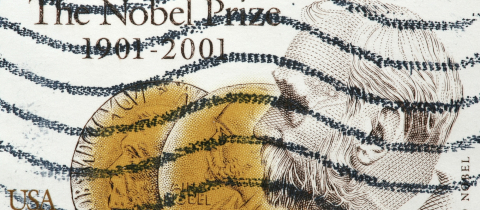Rarely does a single event alter the course of medicine, but that is exactly what happened at Boston’s Massachusetts General Hospital on October 16, 1846 in the surgical theatre that would eventually be christened “The Ether Dome.” Dr. John Collins Warren, having just excised a growth from the neck of a patient rendered unconscious with ether, looked up at the physicians and students who had witnessed the epic event, and declared, “Gentlemen, this is no humbug!”
The onlookers had likely anticipated a duplication of the fiasco that just two years earlier had disgraced dentist Horace Wells who had convinced Warren to allow a demonstration of painless tooth extraction using nitrous oxide. Wells had in his own practice administered the gas successfully on many occasions and gallantly even volunteered to have one of his own teeth extracted to confirm the wondrous properties of “laughing gas.” But in his eagerness to demonstrate the effect, Wells had not allowed enough time for the medical student, who curiously had agreed to be experimented upon, to inhale enough nitrous oxide. An ear shattering scream brought the proceedings to a halt and Wells retreated amidst loud cries of “humbug.”
William Morton had shared a dental practice with Wells and had seen nitrous oxide at work. He wondered if other gases could perform even better. How he happened upon ether would eventually become a matter of much acrimonious debate, but it seems he was put on its trail by Dr. Charles Jackson whose lectures on chemistry Morton attended after giving up dentistry in favour of studying medicine at Harvard. Ether was hardly a novel substance at the time, having been first made in 1540 by the Prussian Valerius Cordus who distilled it from a reaction between alcohol and sulfuric acid. The volatile chemical didn’t get much attention until John Dalton, of atomic theory fame, described it extensively in his 1819 monograph, “Memoir on SulfuricEther." Shortly after, an anonymous note, believed to have been penned by Michael Faraday, appeared in the Quarterly Journal of Science and the Arts pointing out that the vapours of ether, which some physicians were using at the time to treat respiratory problems, "produces effects similar to nitrous oxide." Faraday knew all about nitrous oxide from his mentor Humphry Davy who had illustrated its giddiness-inducing effects and sparked a craze of laughing gas parties. These were soon joined by “ether frolics.”
Jackson it seems was familiar with such frolics and had discussed ether with Morton, although there is no evidence he had suggested its use as an anesthetic. He did suggest rubbing the liquid on the gums before pulling a tooth to reduce pain. What is clear, is that Morton began to experiment on insects, fish, his dog and finally on himself. "Delighted with the success of this experiment, I waited impatiently for someone upon whom I could make a fuller trial. A man came in, suffering great pain, and wishing to have a tooth extracted. Saturating my handkerchief with ether, I gave it to him to inhale. He became unconscious almost immediately. It was dark, and Dr. Hayden held the lamp while I extracted a firmly-rooted bicuspid tooth. He recovered in a minute and knew nothing of what had been done for him. This was on the 30th of September, 1846."
An account of the event in the Boston Daily Journal the next day precipitated a visit to Morton by the eminent surgeon, Dr. Henry J. Bigelow, who after witnessing a number of successful tooth extractions under ether, convinced Dr. Warren to give ether a try. The result was “The Great Moment,” as it was called in a 1944 film that more or less accurately portrayed the story of the discovery of ether anesthesia.
Morton and Jackson fought bitterly over credit for the discovery of ether, oblivious of the fact that in 1842 Dr. Crawford Long, a physician practicing in Georgia, had witnessed a demonstration of "chemistry" with ether and laughing gas by an itinerant showman and made the connection to anesthesia. He amputated a toe under ether but never described his experiments until 1849 at the urging of his friends who regarded him as the true inventor of anesthesia. Indeed, Long may have been the first to use ether, but it was in Morton’s footsteps that others followed, justifying the epitaph on his tombstone "Inventor and Revealer of Anesthetic Inhalation." When Jackson chanced upon this one day, he apparently went mad and spent his last seven years in an insane asylum.







